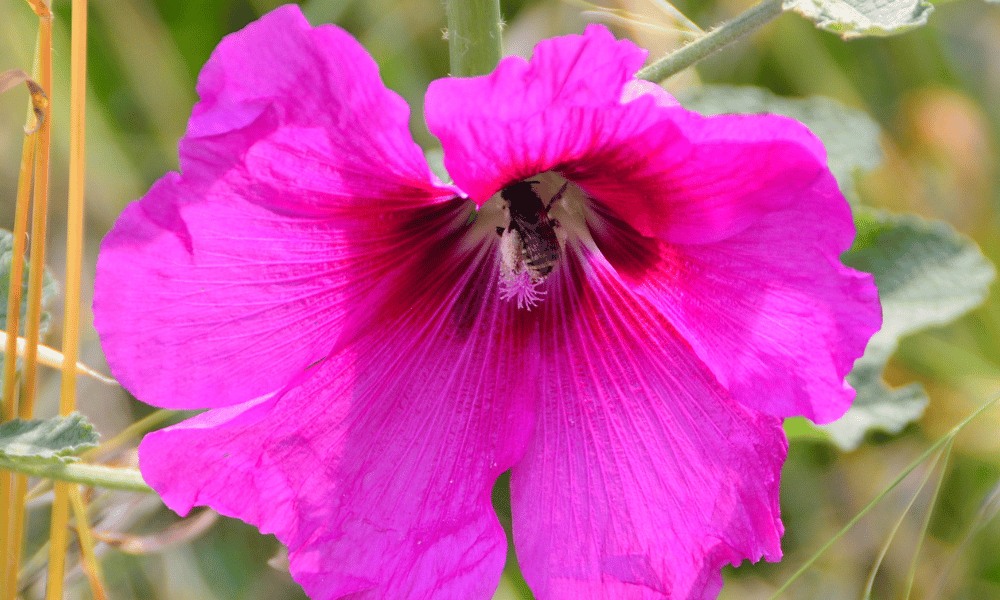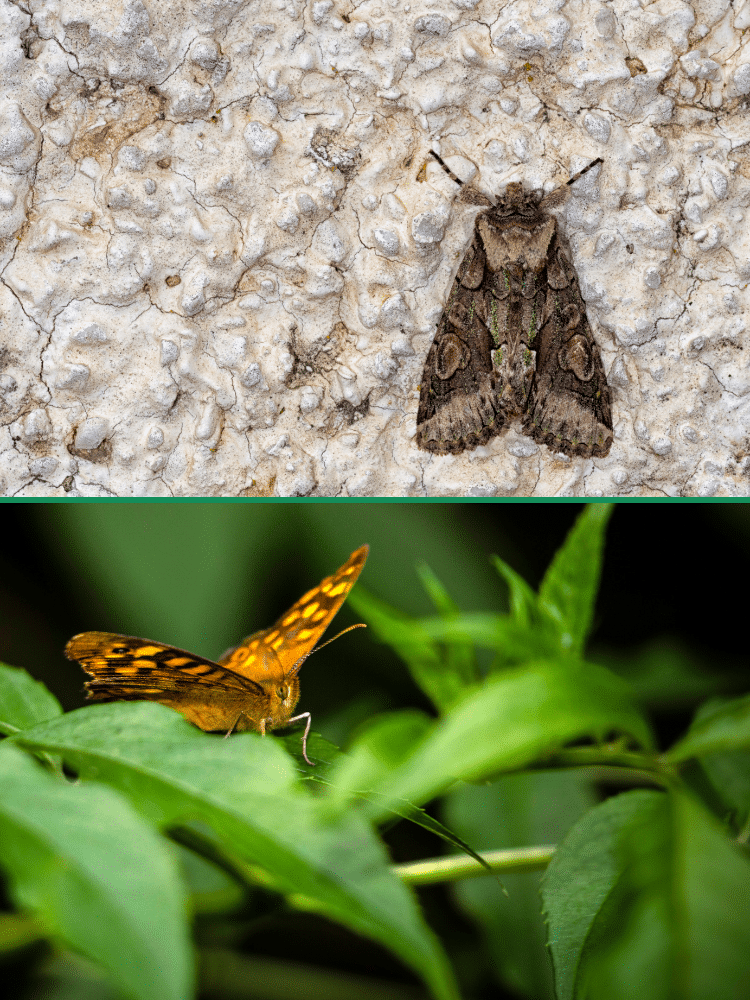Growing plants in our gardens allow us to create beautiful spaces for ourselves and our neighbours. But what about our butterflies? Which flowers should we choose? Do we need to purchase expensive or elaborate flowering shrubs? What about brightly coloured flowers? Do petunias attract butterflies?
Yes, butterflies are attracted to petunias. Not only are these long blooming annuals a great way to add pops of colour to your garden, they also offer a great food source for butterflies.
What Else Do Petunias Attract?
Not only will butterflies be lining up to enjoy the delicious nectar from the petunias, but other pollinators will as well.
Bees and even hummingbirds love petunias. The trumpet shape of the flower allows easy access for butterflies and hummingbirds which each have a special straw-shaped mouthpiece that makes accessing the nectar easy.

Bees and butterflies see colour differently than humans do. Bees and butterflies can both see colours and patterns that we can’t.
Ultraviolet is a colour on the spectrum that is invisible to human eyes, but a big part of the way that these insects see the world. Bees even have a special colour called “bee purple” which is not purple but a mix of ultraviolet and yellow.
Since bees and butterflies see colour differently than we do, it is important to consider their favourite colours if you are hoping to create an attractive landscape for them.
Butterflies can see red (unlike bees) but are drawn more to blue, purple, and yellow shades. Like bees, these colours are considered the best to choose for flowers if your goal is to attract pollinators.
Some studies even show that these coloured flowers produce more nectar than other coloured flowers.
Yes, petunias are a favourite of bees because they are loaded with nectar in protected trumpet-shaped flowers. If a flower is full of nectar that can be obtained with ease, it will attract bees.
Petunias are not only good for butterflies but are also loved by moths as the sun sets too!
Which Varieties of Petunia Attract Butterflies?
Petunias come in a wide array of colours. You have endless options for choosing which petunias you feel would benefit your garden space.
Petunias also come in a variety of patterns. The Starry Night Petunia is a beautiful dark purple flower with white speckles on the petals. These offer a unique and beautiful addition to any flower bed.

Butterflies love the wide range of colour options and the trumpet shape of petunia plants. It is best to grow a variety of petunias in hanging baskets and planters and mixed into your flower beds to attract the most butterflies.
Petunias are great because they also have a long bloom season. They are often the first types of plants you can find in a nursery or garden centre, and they continue to bloom until the first frost.
This allows for season-long feeding for pollinators as well as colour and detail for your outdoor space.
Want to Attract Butterflies to Your Garden?
We’ve Put Together an Ultimate Guide to Attracting Butterflies to Your Garden Including Our Top 11 Plants You NEED to Start Growing Today:
Why Do Butterflies Like Petunias?
Butterflies are attracted to plants for a variety of reasons. One of the biggest things a butterfly looks for is access to nectar. They want to enjoy bountiful amounts of nectar with little to no work.
Trumpet-shaped flowers like petunias offer easy access to the nectar within. Butterflies have a special mouthpiece that they use like a straw. The straw is long and can easily access the nectar at the bottom of the trumpet centre.
If you are hoping to increase the number of butterflies in your garden, consider adding other elements to make a butterfly feel at home. Adding sheltering plants like sturdy shrubs or even a manmade butterfly house can keep butterflies in your space.
Butterflies also enjoy warming their wings in the sun. Putting some large flat rocks that would allow the butterfly to sunbathe and rest during their feedings is a great way to keep butterflies in your garden space even after they have eaten from the flowers.
Butterflies have a unique life cycle that results in very different needs depending on the stage. You want to encourage adult butterflies to lay eggs in or near your outdoor space if you hope to have a large butterfly population.
Adding plants like thistle and milkweed increases the places for your adult butterflies to lay their eggs. Milkweed is also the only food of the monarch butterfly caterpillar. So if you are hoping to add some bold orange beauties to your butterfly watch, be sure to add a good amount of milkweed for them.
Taking the time to add things that butterflies prefer to feed on and providing them with plenty of safe options for rest, will increase their chances of staying near. If you are lucky enough to have butterflies lay eggs in your garden, you could have an abundance of new butterflies to look after as they hatch and feed on your flowers.
Summary
To bring butterflies into your garden, it’s important to know exactly which plants they like. Various bedding plants provide no benefits to wildlife. Fortunately, this is not the case for petunias. Butterflies love them!







